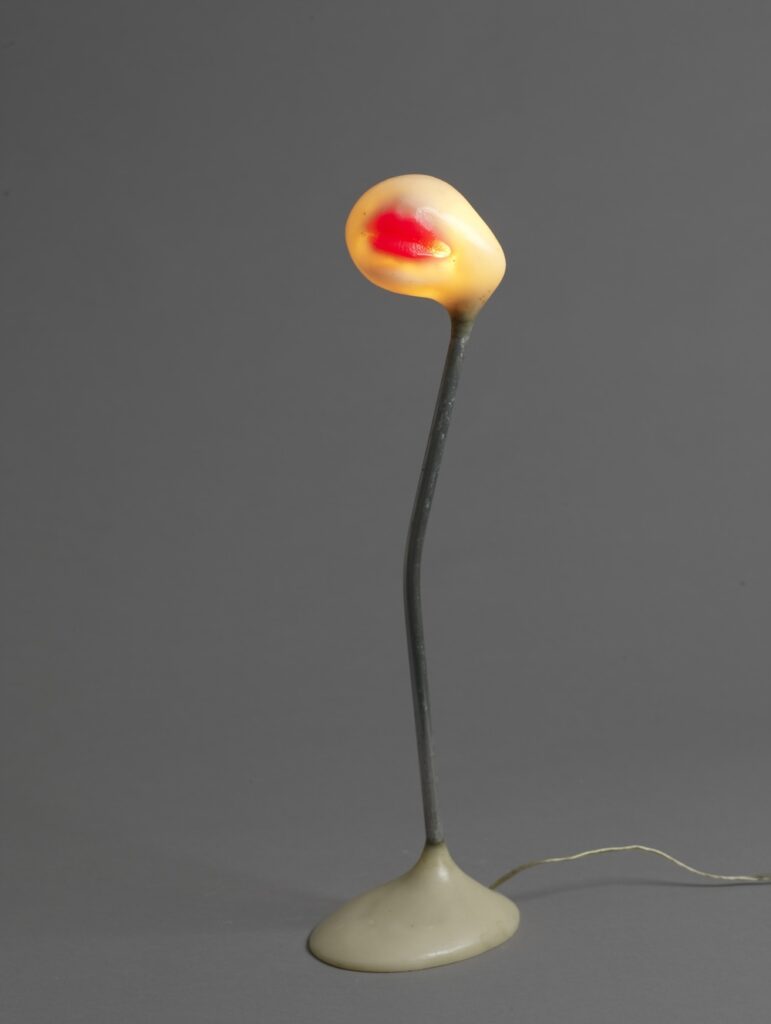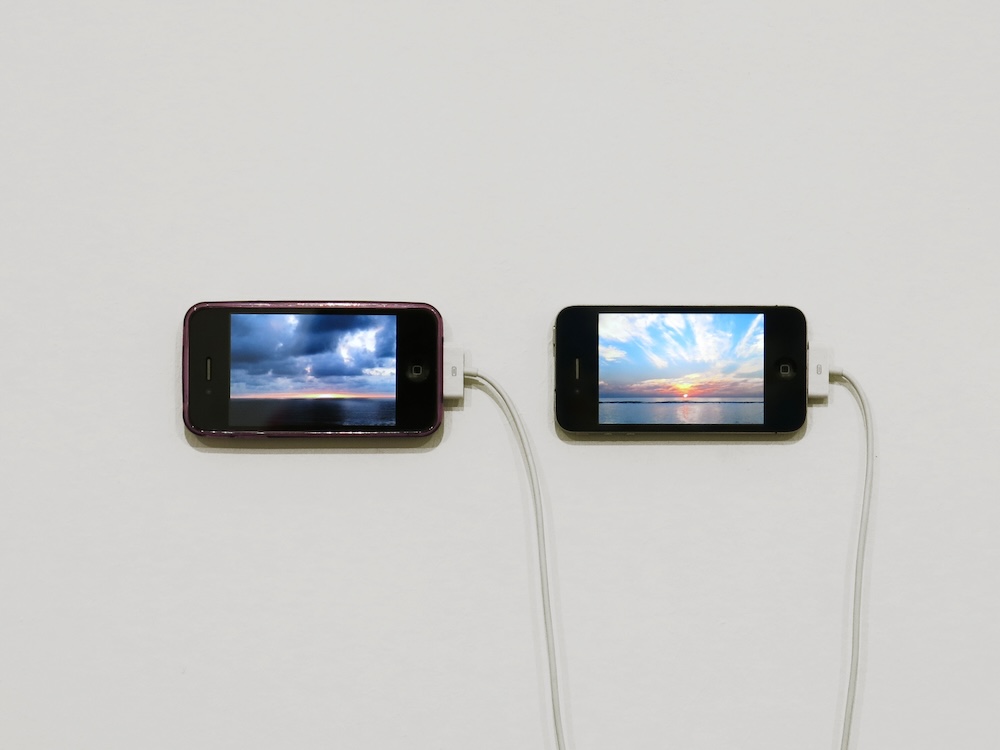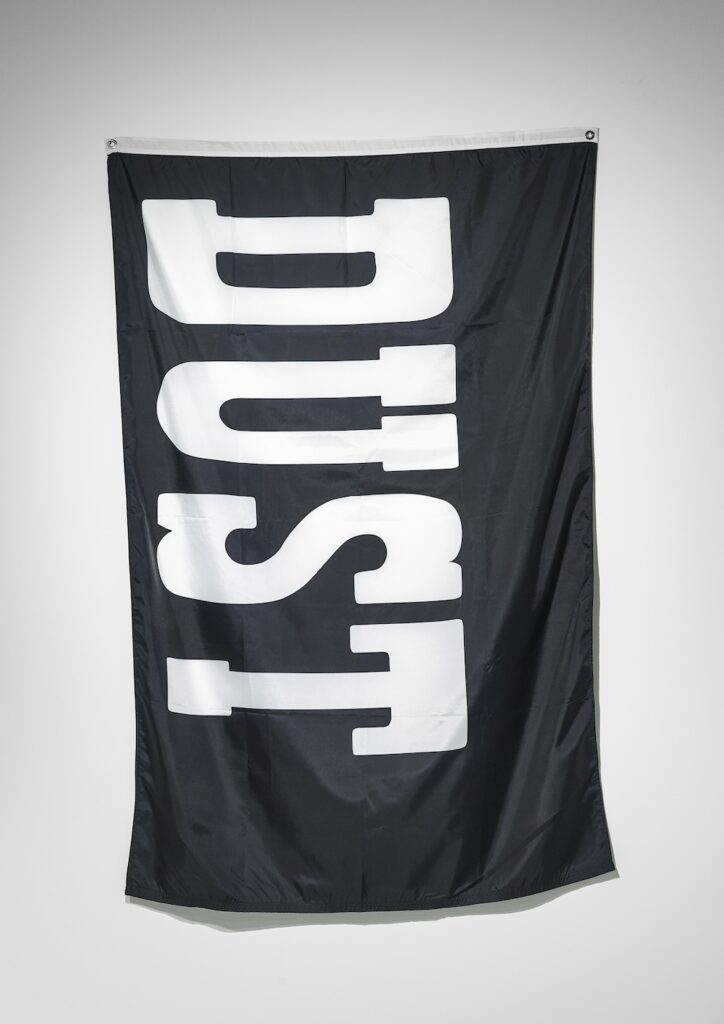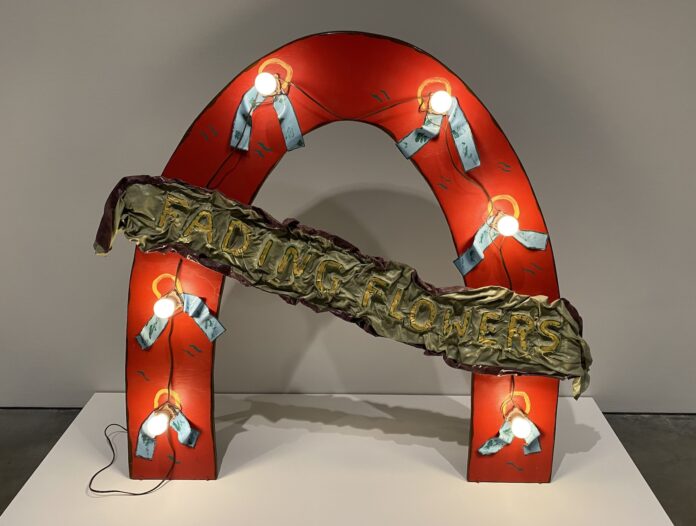There’s no room for ambiguity with the Berkeley Art Museum’s newest exhibit; at least, not regarding the theme. When you want to communicate mortality and inevitable decay, it certainly helps to get the point across when the exhibit begins with items that have quite visibly seen the ravages of time. Despite the century-old museum’s efforts to preserve its extensive collection, quite a few pieces are showing their age in very noticeable ways. As such, the introductory section of the new show is a collection they call “Materiality and Decay.” C’est la vie.
Nearly the entirety of the museum’s bottom floor is dedicated to To Exalt the Ephemeral: The (Im)permanent Collection (through July 6, 2025 at Berkeley Art Museum & Pacific Film Archive), a showcase of items normally stored away in their vault that are now on display to show how well they have or haven’t held up. Though unrelated, I couldn’t help but personally take note that this exhibit opens soon before the Contemporary Jewish Museum opens its Looted exhibit on September 5. That show will center on recovered artwork stolen by Nazis from Polish Jewish families. I obviously haven’t seen that one yet, but both shows focus on 20th century artworks and seems to reveal how the tangibility of art—often the last thing on the mind of artists or patrons—is as real as the mortality of both artist and art-lover.

Indeed, the most prominent set in the “Materiality and Decay” section of To Exalt the Ephemeral is a collection of pieces by the late Eva Hesse. Her late-‘60s works Test Pieces and Aught (the latter being large rug-like canvases) now resemble typical household items (rugs, cups, straws) that look as if they’ve been recovered from a house fire. That sensation is only complimented by one of the room’s centerpieces: Alina Szapocznikow’s Lampe-bouche II (Illuminated Lips II) (1967), a distorted light piece in which a significant portion of lightbulb has melted away. In its current state, it is far cry from its original form which, as its title implies, was once an illuminated, disembodied pair of red lips. The kiss has literally and figuratively faded away.
The next section is “Atmosphere & Environment”, focusing on each artist’s attempt—mostly through film and video—to capture unrepeatable moments. BAMPFA’s existence goes back to the 1880s, the same decade that gave us the groundbreaking Burrow-Giles Lithographic Co. v. Sarony case. In that decision, the US Supreme Court decided that photography can, indeed, be classified as art and is subject to copyright law, despite working via different mechanics than, say, illustrations. A photographer filed the lawsuit against a lithographic company that had reproduced his photo of Oscar Wilde without permission—the company’s position was that photography shouldn’t be considered an art, but merely the science of permanently capturing a fleeting moment.
That’s a fascinating thing to ponder at Berkeley Art Museum in 2024 while looking over Sarah Charlesworth’s Art of Total Eclipse, February 26, 1979, in which she documents the titular eclipse via framed newspaper clippings, all depicting photos when total conjunction had been achieved. Charlesworth’s frames stretch the entire length of the wall.

That piece seems almost a direct ancestor to David Horovitz’s The Distance of a Day (2012). The 12-minute video uses two now-outdated iPhones side-by-side (which, mercifully, recorded in “landscape” mode.) One was used by Horovitz and the other, by his mother while the two were standing on opposite sides of the world. One phone captures the sunrise at the exact same moment the other captures the sunset. The video isn’t even HD and the screens are no more than four inches wide—but they reflect two sides of a moment that is not to be missed.
The exhibition’s “Photography & Light” section greets one with the optical illusion of Robert Irwin’s Untitled 1969 acrylic piece before giving way to “Memory & Memorialization.” As implied by its title, this section features works documenting people, objects, and ideas that have passed on. They include Andy Warhol’s extensive set of Polaroids featuring his celebrity friends, most of whom—like Warhol himself—have since died. A CRT TV in the corner is attached to two sets of headphones with which to witness John Sanborn and Mary Perillo’s 1989 Untitled video, in which choreographer Bill T. Jones pays tribute to his later partner, Arnie Zane, who had died of AIDS one year prior. In the center of the room is Felix Gonzalez-Torres’ 1988 Untitled, a piece of photocopied papers on a pedestal. You, the patron, are encouraged to take one of the pieces (they’re all identical), which are mostly blank, save for text towards the bottom of the pages that documents key moments in LGBTQ+ history up to that time: the White Night Riots of 1979; the Helm Amendment of 1987; “Anita Bryant 1977” (the year that notable bigot started her homophobic “Save Our Children” campaign.)
Finally, an entire room is dedicated to Joan Jonas’ career-spanning collection The Shape, the Scent, the Feel of Things, dedicated to her lifelong fascination with the American Southwest—a reference that may be hard to grasp upon first glance. Visitors are greeted by a cardboard cutout of a wolf sitting at attention, as if waiting for one’s order. Other pieces include collections of maps and crudely-drawn illustrations of people in Jonas’ life, along with the artist herself. Video projections include women at play with various wooden objects, and expansive Southwestern landscapes over the course of time. The collection seems more like someone’s direct tribute to Jonas herself, rather than being perfectly in keeping with the theme.
Help us save local journalism!
Every tax-deductible donation helps us grow to cover the issues that mean the most to our community. Become a 48 Hills Hero and support the only daily progressive news source in the Bay Area.
I haven’t even covered half of the works in the collection, which includes fading video works, documentary photos of performance art pieces, pieces gathered from all around the globe. All of it will be gone one day, be it from neglect, destruction, or simply through exchange.

As someone who had to deal with a considerable amount of his personal items being tossed or damaged in a residential move this year (with another potentially on the horizon), it’s easy to understand how simply taking visual stock of one’s inventory can leave a visceral reaction. At this very moment, homeless people are being forced to witness the few items they have being destroyed on the order of their mayors (in San Francisco and Oakland), governor, and Supreme Court. Those who have seen their belongings swept away are given no working options on how to reclaim or replace their items—simply a painful reminder that in the eyes of some, they’re taking up space. They aren’t given the dignity of a museum showcase.
It wasn’t a crowded day at BAMPFA when I saw the exhibit, so my Aranet4’s CO² levels hovered around 500ppm the whole time I was there. I was, however, struck by the sight of the building right across the street now emptied of its restaurants in order to make way for a new building. Having patronized nearly all of the eateries that were once there, I felt a bit melancholy to see them gone. (Well, at least one is better off gone forever.) But therein lies the one intangible truth of the universe: this, too, shall pass.
TO EXALT THE EPHEMERAL: THE (IM)PERMANENT COLLECTION runs through July 6, 2025. Berkeley Art Museum and Pacific Film Archive. Tickets and more info here.





